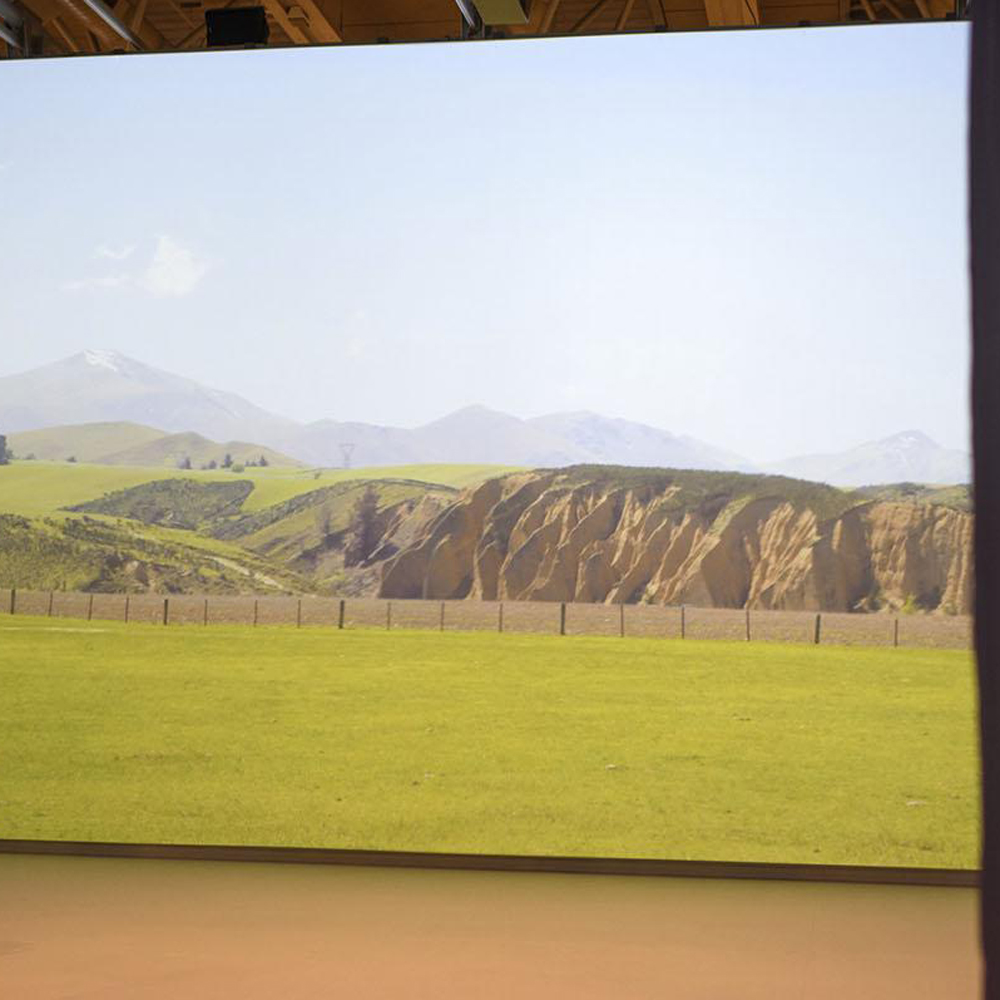Despite Covid numbers up in the thousands nationally, Rita Angus obviously has a strong following with over 60 people fronting up for this informative illustrated presentation.
What an interesting journey of discovery we were treated to, delving into the film which greets visitors on a giant screen as they enter Rita Angus’ immersive exhibition.
Prue and Lizzie both spoke with great passion about their involvement in the project, their discoveries, and the process of bringing the film to fruition.

Image: Detail from ‘A Painter’s Journey’ projection in the Rita Angus exhibition
The 12 minute film A Painter’s Journey revolves around Angus’ oil painting Central Otago. The work was commissioned in 1953 by her intimate friend, composer Douglas Lilburn. He gave her £30 to travel around Central Otago with the goal of creating a single view of what she had seen. Her journey took several weeks by bus, sketching and painting watercolours as she went. Later she transposed them into a composite detailed oil painting. In 1972 Lilburn gifted the painting to Te Papa.
Amazingly the wider effects of Covid prompted Prue and Lizzie’s initial resolve to create a film to accompany the exhibition. A collection of Angus’ work scheduled to be shown at London’s Royal Academy of Arts was forced to be cancelled. This allowed Te Papa’s Conservation team an unusually long time to study Angus’ work. Using infra-red light, UV and microscopes, they were able to analyze her techniques in detail. Even as far as identifying that she had used 4 layers of blue in the sky!
Prue and Lizzie spoke of their exciting Eureka moment whilst observing Angus’ work at such close quarters. They decided to produce a non-verbal film to draw viewers into the painter’s world, immersing them at close range in the landscape and in the artwork intrinsic to the painting ‘Central Otago’.
It was decided that Prue with partner Barrington West should travel south to Central to find and film some of Angus’ plein air painting locations. Armed with copies of Angus’ watercolours, Prue spoke of magic moments such as when they met an orchardist in Alexandra who recognized the exact spot of some of the watercolours. Then there was the time when clouds cleared in Wanaka to reveal a mountain scene Angus would have enjoyed.
Thanks to Toby Donald’s editing skills, the film seamlessly merges their real-life clips with the original watercolour works and the final oil painting. Incorporated too is the hand of Linda Waters, one of Te Papa’s Conservators, demonstrating brush strokes and colours the Conservators ascertained Angus would have used.
The perfect suggestion of using Lilburn’s meditative orchestral Four Canzonas as the background music came from Jeremy Cullen. His piano skills can be heard in the film. Gentle sounds of nature, birds, water, wind and church bells drift through the score. It was fitting that tribute be paid to Lilburn. He was Angus’ companion, emotionally, financially and creatively. She too saw herself as a synesthetic, someone who could hear colour and see sound.
The film is a beautiful combination of reality melting into Angus’ works in macro detail. The dramatic movement of clouds, rolling hills, imposing mountains, flowing water and flexing flora transport us to the grand landscape of Central Otago. Sheds, houses and churches provide a human scale.
Dana Jackson
Member